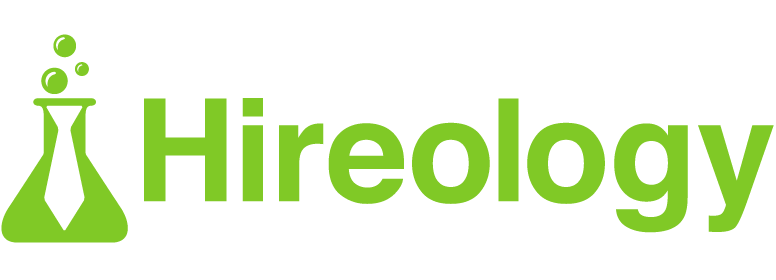Amidst a record-setting month of COVID-19 cases, employers added 467,000 jobs to the economy in January — significantly overperforming economists’ predictions. While it’s important to remain cautiously optimistic, this surge indicates that many of the COVID-related hiring and workforce challenges that we’ve experienced for the last two years may be reaching an end. Additionally, The Bureau of Labor Statistics (BLS) revised November and December’s job numbers by a staggering 709,000, a sign that this recovery may have been steadier than experts believed.
The household survey indicated a pickup in labor force participation — up to 62.2% from 61.9% in December. While still well below the February 2020 pre-pandemic level, the growth is an indicator of our resilience in the face of the unpredictable nature of the COVID-19 virus. The unemployment rate ticked up slightly to 4% — likely due to a combination of omicron-related layoffs and more people who were previously sidelined re-entering the job search.
Private sector job gains were widespread but led by leisure and hospitality. Leisure and hospitality added 151,000 jobs, professional and business services added 86,000 jobs, retail trade added 61,000 jobs, transportation and warehousing added 54,000 jobs, healthcare added 18,000 jobs, and wholesale trade added 16,000 jobs. Mining, construction, manufacturing, information, financial activities, and other services showed little or no change.
The key takeaway for employers this month is that some hiring relief might be on its way. In previous months we’ve discussed advice for attracting more job seekers during an unprecedented labor shortage. But now that we’re seeing more folks entering the workforce, the key is to shift your focus on hiring in order to close the deal on the applicants you attract. You have to deliver on what you’ve marketed to job seekers and at the same time, you have to make sure that you’re only moving forward with the very best candidates.
Below is our advice. Or if you’d like to hear directly from our VP of Product and Growth, Anil Harjani, on what all of this means for you check out this video.
Provide a great candidate experience
If you’re seeing an influx of candidates, that’s great news. It means that not only are folks re-entering the workforce (for the reasons listed above) but also that you’ve done a good job attracting them to your organization and selling your open roles. But now you have to follow through on everything you’ve promised in your recruitment marketing messaging. Chances are, you’ve sold your company as a place that values its people, so make that clear by showing your candidates that you value them from the day they submit their application. What does this look like?
- Speed: Slow hiring processes signal to candidates that you do not respect your employees’ time. Applicants should never have to wait weeks to hear back after they’ve applied for a job — whether it’s a yes or a no from you. So if you’re a leader on your team, mandate 24-48 hour response times to initial applicants. And when it comes to the rest of the hiring process, try to keep it between two and three weeks. And never make a candidate wait more than a day to hear back about next steps after an interview or a skills test completion.
- Convenience: Failure to make the hiring process as easy and convenient for candidates is another sign that you do not respect the needs of your people. So when it comes to tasks that are traditionally clunky — like communicating back and forth and scheduling interviews — use tools that streamline these steps a bit. For example, maybe you use text instead of email when communicating with candidates so they don’t have to navigate through cluttered inboxes or try to respond to emails on their phones. Additionally, look for tools that make scheduling interviews easier, such as those that integrate with your teams’ calendars and allow candidates to choose times that work best for them.
- Organization: Candidates can sense when your team is unorganized behind the scenes, and it gives them an idea of what it’s like to work for you. Mistakes like double booking your team for interviews, data errors, or ill prepared interviewers can leave a bad taste in your candidates’ mouths. Avoid these issues by centralizing your hiring tools — all candidate information, candidate communication, interview notes, skill tests results, and more should live within one single platform.
At Hireology, we pride ourselves on practicing what we preach and we can confidently say that it results in better hires, happier employees, and reduced turnover. As Maddie Cecil, a recent hire on our marketing team put it, “The interviewing and hiring process with Hireology was a night and day difference compared to other companies I applied to. I heard back from the recruiter right away after each step and I always knew where I was in the process.”
Verify skills and work history
An influx of applicants also means you have to be more strategic about who you move forward with. It may be tempting to feel that any applicant is a good applicant — especially after the year we’ve endured. But now is the time to step up your verification efforts. Make sure that candidates who seem great on paper really do have the experiences and skills they say they do. Interviews of course can help, but add in steps like skills tests or reference checks just to add that layer of confidence in your hiring decisions. It helps if you’re working with an all-in-one hiring platform like Hireology that allows you to order these directly from your platform and keep the process moving quickly.
Conduct background checks
For some industries — like those involving patient care or heavy equipment operation — skills tests and employment verification might not be enough. In addition to knowing candidates have the experience and abilities to do the job, you need to know that they aren’t going to bring on any added risk. That’s where background checks and drug screens come into play. Again, the ability to order these directly from your applicant tracking system gives you that peace of mind while keeping your hiring process moving along nicely.
Focus on interview quality
And finally, when done right, traditional interviews are sometimes all you need to make a great hiring decision. The key though is to make sure you’re not relying on gut feeling or favoring candidates that you “click” with. Your interviews need to consist of strategic behavioral questions that dig into how your candidate would react in certain situations at work. And even more importantly, you need to ask every candidate the exact same questions. That way you level the playing field for everyone you interview and can make sound decisions based on a standard rubric.
We may be reaching the light at the end of the tunnel when it comes to the hiring crisis. Or at the very least, we’ve proven that the economy is strong enough to withstand fluctuations in COVID-19 cases. That means that as an employer it’s time to start thinking about more than just attracting applicants. Great employer branding and source diversification will always be important, but the key to success as we enter a new phase of recovery will be ensuring that you conduct an efficient and quality hiring process.
And the good news is that you don’t have to go at it alone. Not only does Hireology integrate with leading job boards and power great employee referral programs, but our platform also helps you stay organized and move fast in the hiring process — with tools like an intuitive applicant tracking system, built-in candidate verifications, in-app candidate communications, and more. Learn how we can help you enhance your hiring process by scheduling a free demo today.




